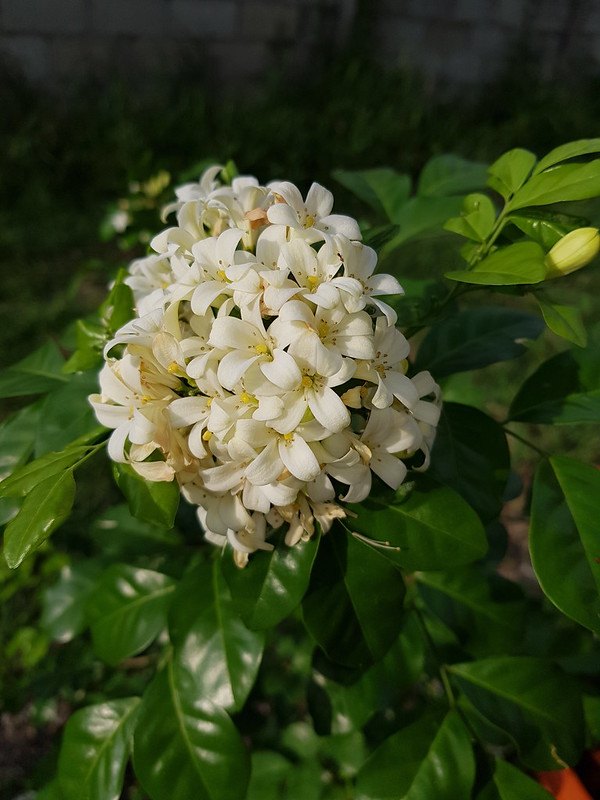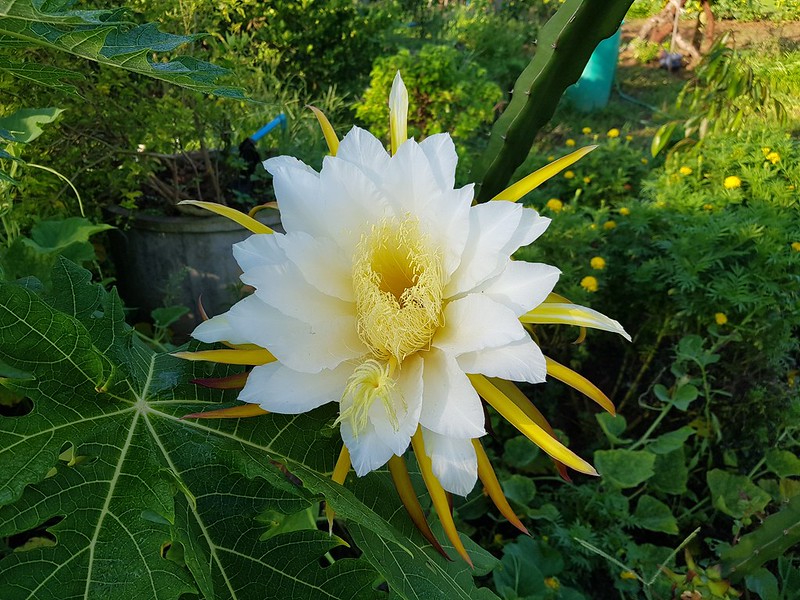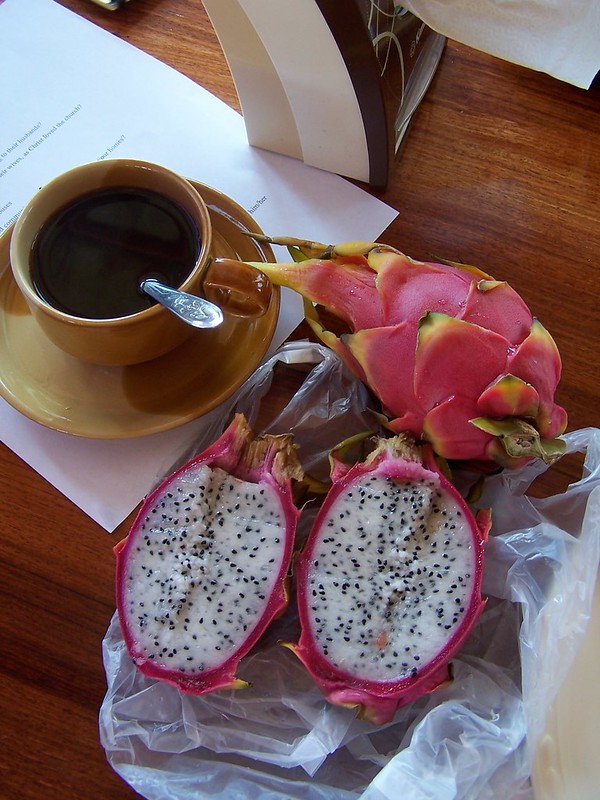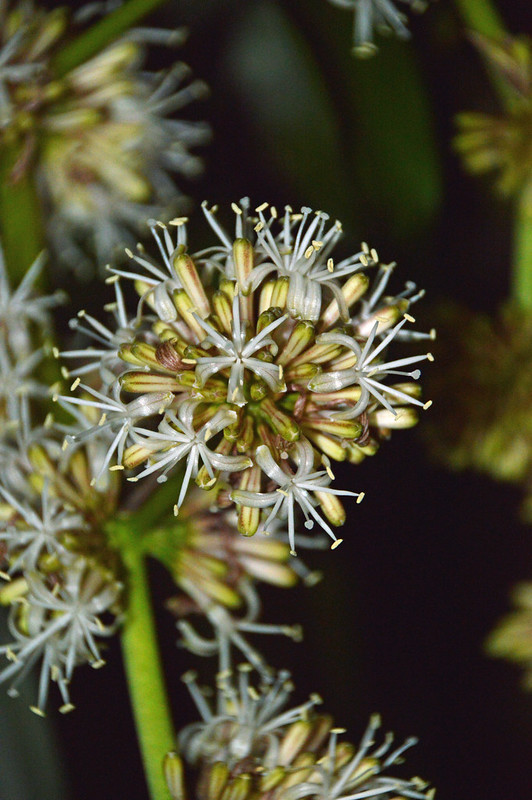It was our day off and we were tired of hanging around our house all the time because of COVID-related travel restrictions. So we decided to go check out a couple of waterfalls on the edge of Kalasin and Mukdahan provinces. The first waterfall we went to was in Kalasin Province. We almost didn't find it because the sign was overgrown and even the parking area was washed out from the road such that we couldn't get our car onto it. Tat Thong Waterfall was fairly dry due to the lack of rain this year, but there were some pretty rock formations in the creek bed.
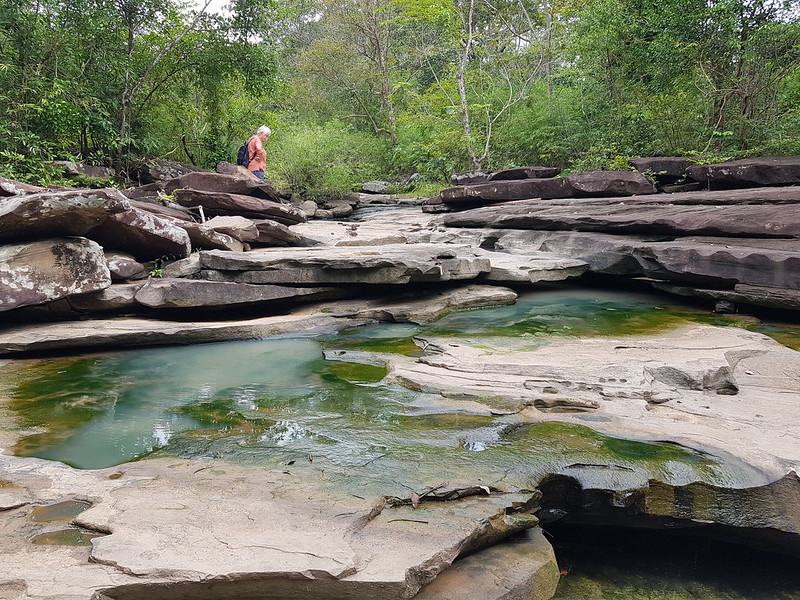 |
| Tat Thong Waterfall |
It was not too far to the next waterfall, but it took a while because the road was not in great shape. This was not your typical tourist route. Eventually we arrived at Kaeng Pho Waterfall Park. This park had had both some smaller upper rapids and a larger waterfall downstream. Upstream from the rapids was a popular wading spot. Fortunately, it was a weekday and there were not a lot of visitors.
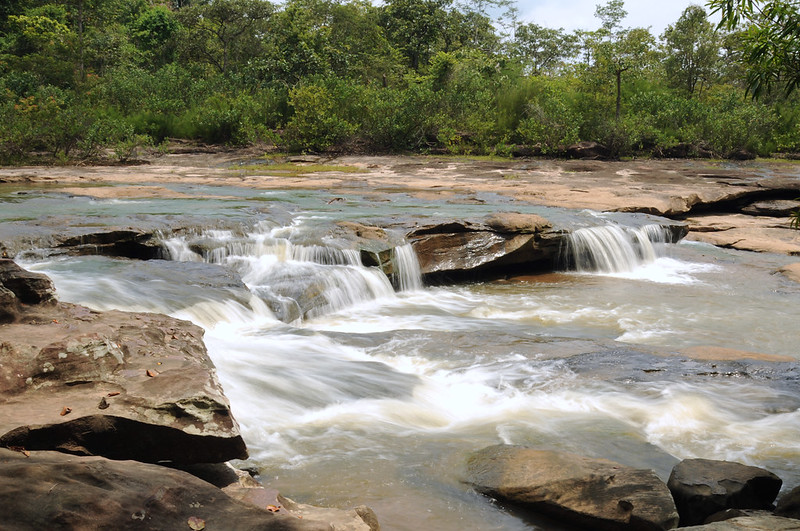 |
| Rapids at Kaeng Pho |
 |
| Kaeng Pho Waterfall |
After visiting Kaeng Pho, it was getting to be lunchtime. At this point we were in a very rural area that did not look like it saw a lot of tourists. We went through several villages and finally came to a larger one (still quite small, but larger than some of the others) named Non Somboon, which translates, "Bountiful Hill". (There are actually a lot of villages by that name in Isaan.) We finally saw a place that had several pots out on a counter and some picnic tables so we figured it must be a restaurant, even though there was no kind of signage to let us know what it was.
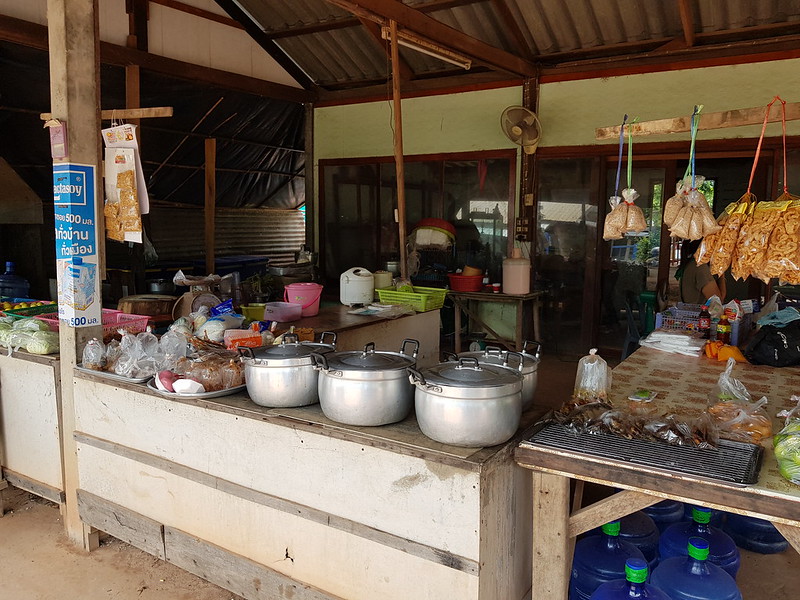 |
| Restaurant in Non Sombun |
The shopkeeper made us feel welcome and she even spoke a few words of English. After we sat down with our meal, someone came out all excited and took our picture. She said we were the first "Europeans" to eat there. I guess it was a "first" for us to have that kind of honor. And even though we were unusual guests at the restaurant, they didn't make us feel like oddities. (She also used the term "European" instead of "farang," which may also be a first for us.)
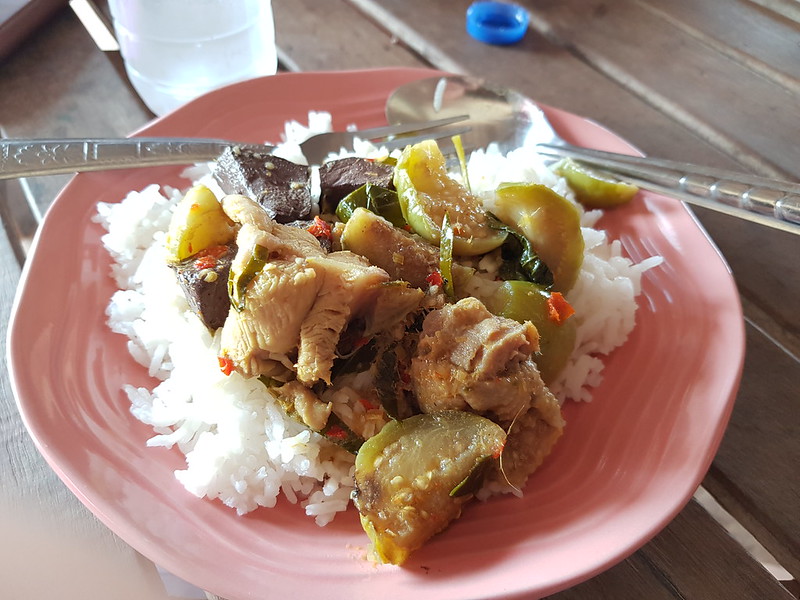 |
| Green Curry with Chicken |
We were surprised that we had the distinction of being the first Westerners at the restaurant. There are Westerners scattered throughout Isaan, usually foreign men married to Isaan women. It is sometimes had to find a village without at least one "European" living in it. What mattered to us, though, was that the food was good—we had green curry with chicken over rice. Two plates of food and two bottles of water for about $3.50 US. I would put a review of the restaurant on Google Maps, but I wouldn't know what to call it.
After lunch, we continued on our journey, not sure where we would end up or which route might eventually get us back home. But about ten minutes down the road from the restaurant, we saw a sign for another waterfall. We turned off the pavement and down a dirt track to a parking area. Then we followed an unmarked trail, assuming it would take us to the waterfall. This one was called Huai Lao.
 |
| Huai Lao Waterfall |
This area seemed to be a popular hangout for teenagers.
It took us a few hours to meander home from this last waterfall. We caught some rain and some pretty cloudscapes along the way.
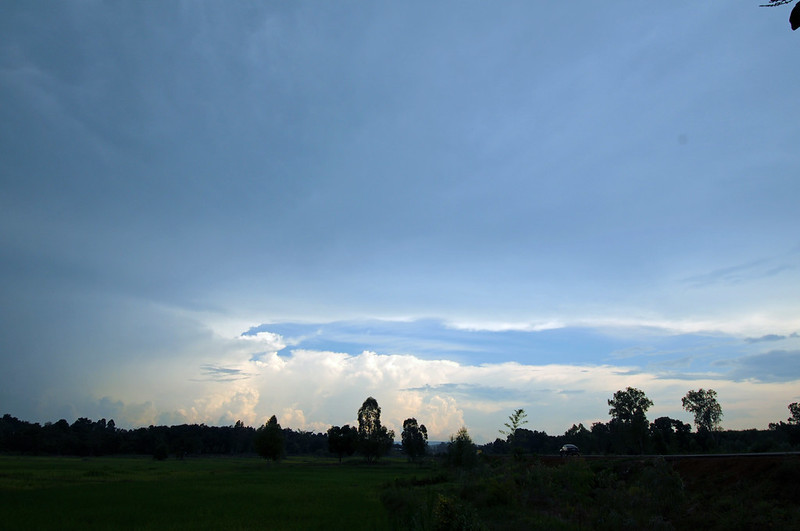 |
| Cloudscapes Along the Way |
It was nice to have a day out in the country, something that doesn't seem to happen much in these days of COVID-related travel restrictions. This was actually our first time to go into Mukdahan Province. Even though the driving was a bit tiring, we came back refreshed and happy to have a day to do some exploring around the place we call home.
The heavens declare the glory of God, and the sky above proclaims his handiwork. Psalm 19:1 (ESV)

